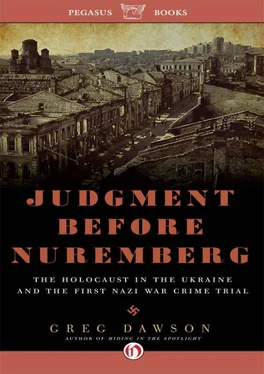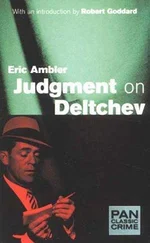It’s a terrible poetic injustice that our collective ignorance about the “other” Martin Luther allows him, like a vampire bathed in moonlight, to benefit fraudulently from the reflected glory of Martin Luther King, Jr., with whom he is not worthy to share his own name. Four-hundred sixty-nine years after On the Jews and Their Lies was published, sixty-six years after Auschwitz and Dachau and Sobibor were liberated, it’s past time for a new Jeopardy! answer:
“He was a sixteenth-century German theologian and reformer whose anti-Semitic writings were quoted by Hitler and other Nazis to justify the extermination of six million Jews in the Holocaust.”
Who was Martin Luther? At last we know.
Even if Joe Public’s knowledge of World War II derives mostly from old movies and dimly remembered history classes, odds are he knows about the Kamikaze pilots, approximately 2,800 Japanese airmen who spectacularly crashed their planes into U.S. ships in the Pacific on suicide missions, sinking 34 ships and killing approximately 4,900 sailors. But odds are even greater—almost a sure thing—that Mr. Public knows nothing about the 3,000 German soldiers who fired the first shots of the Holocaust and murdered over a million Jews.
In his book Masters of Death , historian Richard Rhodes says of these men, the Einsatzgruppen, “No more sinister phalanx was ever loosed on the world.” Ever? At first blush it seems an extravagant claim, considering the multitude of sinister phalanxes over thousands of years of recorded human depravity. The rest of the book’s title also feels like overreach: The SS-Einsatzgruppen and the Invention of the Holocaust. However, check the record and you will discover that what sounds like hyperbole turns out to be simple statement of fact.
Before Auschwitz and Sobibor and Treblinka, there were the killing fields of Ukraine. The Einsatzgruppen were the exterminators, bullets their chosen tool. But the shooting and disposing of scores of men, women, and children every day proved so public, labor-intensive, and horrific that the Nazis decided there had to be a better way—less draining for the killers. Perhaps… behind closed doors, using gas? Perverse necessity became the mother of satanic invention. After the wretchedly bloody and inefficient carnage in Ukraine, the Holocaust realized a sanitized and orderly perfection in the gas chambers of Poland and Germany.
“It is impossible to understand how the Holocaust unfolded without knowing this part of the story, because the Einsatzgruppen massacres preceded the invention of the death camps and significantly influenced their development,” Rhodes wrote. [1] Richard Rhodes, Masters of Death: The SS Einsatzgruppen and the Invention of the Holocaust (Vintage Books, New York, 2002), xii.
The German army, the Wehrmacht , was built to fight battles, take prisoners, and conquer and occupy countries. The Einsatzgruppen had but one purpose: to kill Jews—though they willingly, even eagerly, killed others along the way. Absent Hitler’s goal of a Judenfrei Europe, the forming of the Einsatzgruppen in the spring of 1941 makes no sense. Indeed, given his stated intentions for Operation Barbarossa, they were inevitable.
Hitler did not seek merely to conquer territory, as he had in Poland, France, Belgium, and elsewhere across Europe. He intended to eradicate the people and institutions of Judeo-Bolshevism in the Soviet Union, which he regarded as an alien ideology and spoke of almost as if it were a living virus. He once described Jews as “a racial tuberculosis of the people.” In a speech to hundreds of officers three months before the invasion, Hitler called Bolshevism “the equivalent of social delinquency” and said Barbarossa would be “a war of extermination.”
Historians have searched in vain for a written “Declaration of Extermination” signed by Hitler, sealing the Jews’ fate. As historians have noted, that was not the Führer’s management style. If Hitler’s aggressive, grandiloquent oratory was opera, his management and decision-making style was jazz—teasing, improvisational, illusive. Pinning down the Führer was like trying to nail Jell-O to the wall. From the podium Hitler issued sweeping prophecies and left his lieutenants to divine his true intent and transform it into action. “This elicited all sort of initiatives, all sorts of plans,” observed historian Christopher Browning. “Sometimes he said, ‘No, you didn’t read me right.’ Sometimes he put up a red light. Sometimes he flashed a yellow light—‘not ready yet’—and sometimes he shone a green light and gave approval to go ahead. You can’t go to a single document or a single meeting and say, ‘Here is where something was decided.’” [2] Interview, “An Insidious Evil,” The Atlantic Monthly (February 11, 2004).
Hitler’s instinct to camouflage trickled down the chain of command. Even early in the war, before the prospect of defeat gave the Nazis cause to conceal their crimes, they were careful to cover their tracks by employing a host of euphemisms for murder such as “special tasks” and “executive measures.” Jews were “rendered harmless,” “got rid of,” “appropriately treated,” “finished off.” Ample evidence of Hitler’s intentions and verbal orders is found in statements of subordinates. Less than a week before the launch of Barbarossa, Einsatzgruppen commanders were summoned to the Berlin office of Reinhard Heydrich, chief of the Reich Security Main Office (RSHA).
One commander in the room, Dr. Walter Blume, recalled in his trial testimony Heydrich’s warning that “in the imminent war with Russia, partisan warfare has to be anticipated, and that the region had a large Jewish population which must be liquidated. He added that the Jews of Eastern Europe—as the germ-cell of world Jewry—must be exterminated.” At Nuremberg the Einsatzgruppen commanders pleaded not guilty, arguing they were following an order from Hitler (known as the Fuhrerbefehl) to murder the Soviet Jews . Consistent with Hitler’s method, no document was ever produced with a Fuhrerbefehl. Otto Ohlendorf, the first to testify, claimed the order was orally conveyed to him by RSHA personnel chief Bruno Streckenbach before Operation Barbarossa, and other commanders eagerly parroted him on the stand. Streckenbach, of course, was only the messenger from Heydrich or Himmler, who were reading the Führer’s tea leaves from above. By the end of the trial, the prosecutors had proven beyond a reasonable doubt that Hitler was the impetus and inspiration for extermination of the Jews in Ukraine and the East.
The four “action groups” ( Einsatzgruppen) that would form the leading edge of the Holocaust were recruited and trained with breathtaking haste—about a month. By comparison, basic training for a U.S. Marine is thirteen weeks minimum. Physical training was perfunctory, and not really necessary for their upcoming tasks. There was time on a firing range, and “terrain exercises” which amounted to little more than paintball without the paint. Mostly, the Einsatz recruits sat and listened to lectures that instilled a simple, murderous syllogism: Bolshevism was the enemy that must be eliminated. All Jews were Bolshevist. Thus, all Jews must be eliminated. This included Jewish women and children, who carried the seeds of future enemies.
The enduring conundrum of the Holocaust is the bestial/celestial duality of the German soul, capable of soaring to infinite heights and burrowing to unimaginable depths. This duality was personified by the Einsatzgruppen commanders—the few, the proud, the depraved—who also represented the best and brightest of German society. “In any society, people with proven track records are frequently selected to carry out important tasks,” wrote historian Hilary Earl. “In the case of the Einsatzgruppen leaders, almost certainly they would have attained important jobs even if the Nazis had never seized power, because they were the elite of their generation.” [3] Hilary Earl, The Nuremberg SS-Einsatzgruppen Trial, 1945–1958 (Cambridge University Press, 2009), 134.
Читать дальше












